How To Foster Innovation Culture Remotely Through Design Thinking Techniques
We’ve all become intimately familiar with the new status quo at this point. The home has been more lived in than it has been in years, you’re catching up on old shows, learning new skills, vegging out on the couch, or doing everything in your power to keep yourself busy. In all hopes the sky will shine brighter in the coming days and we can put shoes on the streets again, but the present demands caution and patience.
Most pertinent about the status quo has been the immediacy with which remote work has continued to keep businesses turning their wheels. Communication technologies like Zoom, FaceTime, Discord, and Skype have proven to be instrumental in keeping our world connected. The transition hasn’t been seamless, but it’s realization has been profound.
The reliance on remote work has levied an important change in what the status quo will continue to be once the crisis has simmered down. Take a look at what companies are succeeding versus those that are wallowing. Taking action to the sudden shift in how the workplace operates separated the wheat from the chaff, determining which companies have had the best response in the face of a broken common order.
Those who were slow on the uptake in adapting remote work to their everyday workplace environment are upstaged by those with the foresight to change quickly. The companies with the best response to this new remote-working dynamic will play a significant role in overcoming the obstacles ahead. They’re the ones to keep eyes on as they create opportunities for the future, finding purchase in uneven terrain and persevering where others failed.
The pandemic has proven how integral remote work is to how society functions. What matters now is how it continues to play in the coming days. How can we elevate our ability to function over vast distances to the same effect as we would in person? How can we foster an innovation culture remotely and thrive in the home environment?
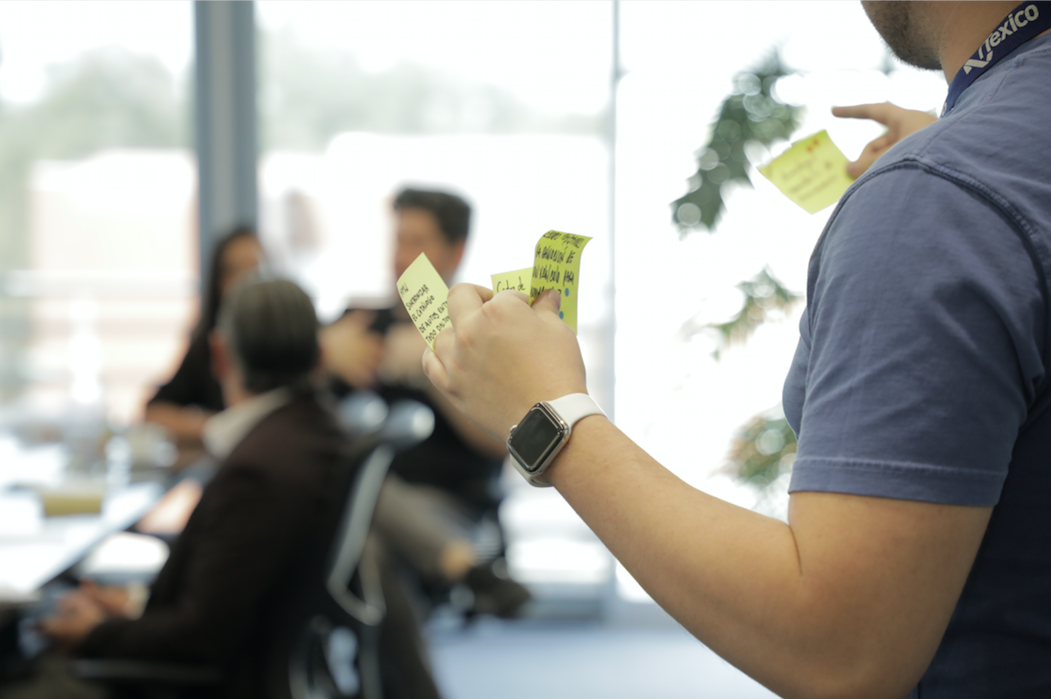
What Is Innovation?
Innovation, at the face value syntax of the phrase, is a great buzzword to throw into casual conversation. It, like many other words of similar stature (diversify, synergy, consolidate, yadda yadda yadda), can be readily peppered into a sentence to make it seem more innovative. See? Already made that last one sound smarter.
It’s easy to get swept up in the floral, professional verbiage that seems to occupy business-centric talk, really makes it look like you know what you’re talking about. The only thing better than sounding smart is having an accurate knowledge of what the terms you’re using actually mean. What is innovation? What constitutes a concept that defines an innovative standpoint?
Put simply, innovation is achieved once you turn novel and creative ideas into new solutions. You’re focused on paving untread ground, developing industrious solutions to resolve disputes, bugs, and obstacles that stand in your way. More often than not, being innovative requires out-of-the-box thinking, as well as a willingness to test the untested for greater expansion and progress.
Innovation, both for problem solving and product development, has its own process for proper utilization. Being innovative is a road of development and adjustment. You’re constantly discovering, testing, and launching new ideas with the intent of creating value. Not every innovation will produce results, but every attempt exponentially creates more opportunities for other innovative ideas. It’s a process that feeds its own production.
Maintaining constant innovation is imperative for any business. Without uncovering how an organization can evolve, improve, and change to stay with the times, your company is bound to fall out of fashion. Antiquated practices can’t survive in modern settings. The only way to stay relevant is to adapt.
How and Why Do We Innovate?
The end goal of innovation is not simply to stay relevant and meet the bare minimum. The goal is to gain a competitive advantage over the competition. You may develop a cutting edge product, or employ practices that deliver a better service to your customers to stay ahead of the curve. Anything that puts you a step ahead makes a difference.
Every competitive advantage gives you a better shot at the golden prize: winning. Granted, there’s no checkered flag or white ribbon, but winning comes in many forms, just as there are many options and paths to get you there. There are several benefits that come as a result of innovation in the workplace, such as increased competitiveness, improved staff retention, business continuity approaches, or increased customer retention.
Let’s bridge the gap between innovation and results, shall we? How exactly does pursuing innovative approaches obtain these benefits you’re looking for? For starters, increased competitiveness. Investing in selective innovative practices designed to increase the cost-savings markup of your company inches you closer to the green. Ideally, you want to strike the perfect balance between getting more done while lowering costs and increasing quality. You may not find the golden egg that nets you all three immediately, but every advancement counts.
You may also run into challenging jobs that require focused attention to make them more appealing to employees. Improving staff retention means an environment that challenges without overwhelming. Initiatives that are made to address some of these challenging jobs and offer solutions to the provided issues help ensure your employees want to stay under your employ.
Improving your business continuity approach is a concept we’ve already harped plenty on: adaptation. The market is in a constant state of flux, revealing new advancements while tossing obsolete practices and technologies into the dustbin of history. Time is a treadmill, and innovation is what keeps you moving forward so you don’t fall off.
Then, of course there’s increased customer retention, possibly the most obvious and direct focus of innovation. Whether you’re intent on improving existing services to better appease your customer base or offer new ones that allow you to enter new markets, every new outreach you make for your customers is a product that needs to break the mold in order to be noticed.
Design Thinking as a Framework for Innovation
Creativity is the fire that stokes design thinking. Over the last 10-20 years, design thinking has emerged as the predominant framework, emphasizing practical solutions achieved through exercising human-centered design. What does that mean exactly? It means that the best way to create innovation is by focusing on the pivotal lynchpin of every good idea: the average human.
These products and services you’re creating are not designed for a vacuum. At the end of every click, every interaction, every choice is a person trying to get the most out of your company. That’s who you have to satisfy. The end-user, through design thinking, is the focal point that your entire brainstorming enclave bases their ideas around.
You’re essentially putting all the power into the hands of your experts, your software engineers. The design thinking framework provides the structure that allows them to leverage their creative skills to deliver a product that understands the end-user’s needs and desires. Human-centered problem solving accounts for an audience that, unlike ever before, has a greater voice and input into how a company should address their individual necessities and complaints.
The bottom line is that older frameworks aren’t cut out for the shifting digital paradigm that makes up today’s market. Design thinking is the only boat that floats due to its recursive, human-centric approach to problem solving, development, and internal process improvement.
This is a process that doesn’t require your creative powerhouses to be in the same room together. Even remotely, with employees scattered across the state, continent, or globe, your software engineers can commandeer a framework that lends itself to generating new, innovative ideas.
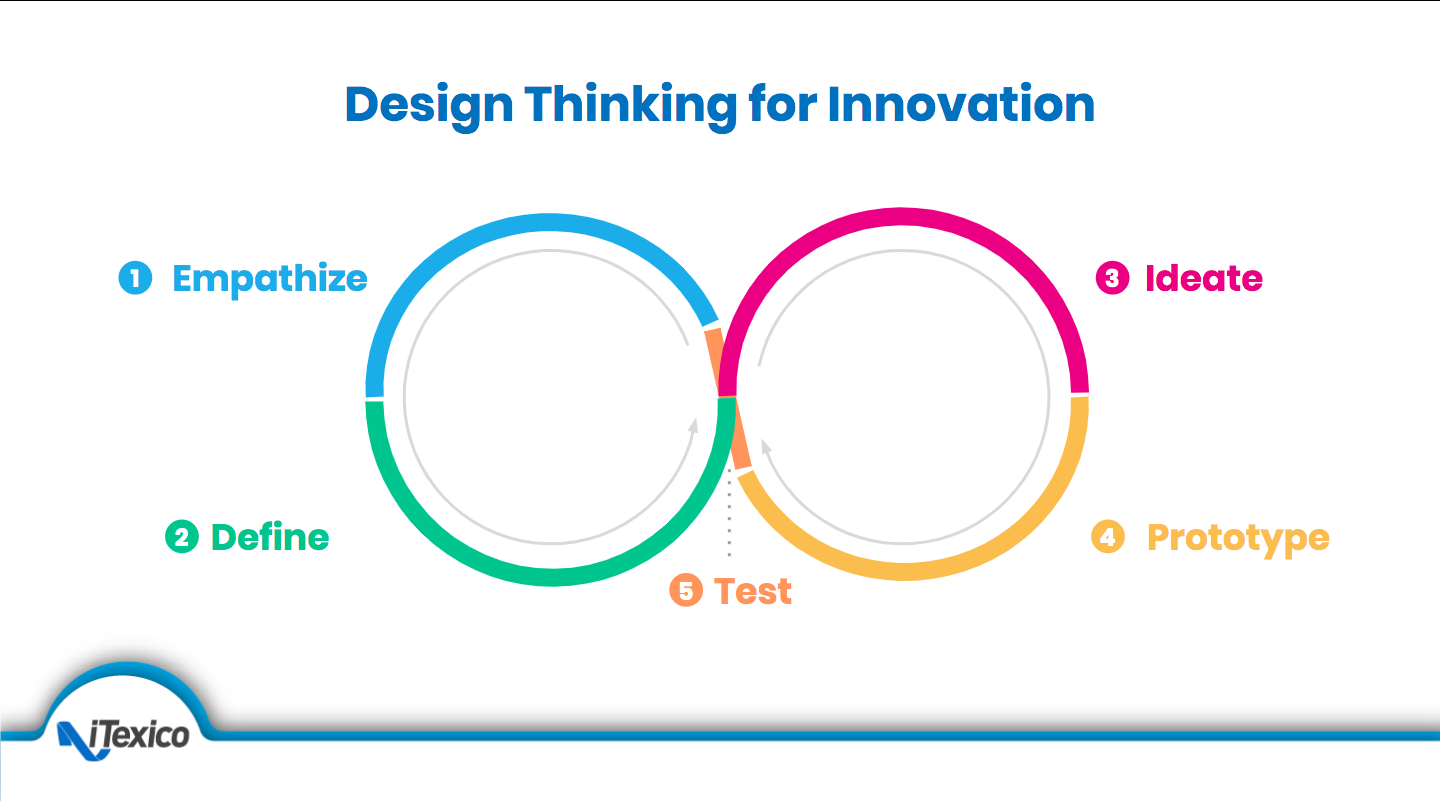
Remote Design Sprints
Design Sprints were created by a man named Jake Knapp, a software developer employed by Google Ventures at the time. While working with Google, he wanted to create a process that could effectively replicate widespread feedback in a quick turnaround period. He refined and documented his technique after validating with several startups until arriving at the final product we know now.
Once Design Sprints gained popularity, it spread like wildfire. It’s a technique that’s since been adopted by a litany of high profile industries, including governments, universities, and public and private organizations. It’s an ideal structure for fostering innovation and tackling medium to large size problems without endless debates.
That doesn’t really define what Design Sprints are, though.. In a nutshell, Design Sprints facilitate design thinking in a five part process or workshop designed to generate, prototype, and test digital product ideas in a matter of days. Each step, usually accomplished individually on each day of the workweek, establishes a structured, functional schedule that paces and concentrates your team’s workflow.
- Empathize
- Define
- Ideate
- Prototype
- Test
Remote Design Sprints, in actuality, are functionally identical to normal Design Sprints, making it an ideal formula for long-distance work. Design Sprints specialize in leveraging the creative output of each individual software developer, since the steps leading up to the prototype stage require independent solution development.
Benefits of Remote Design Sprints
There are a few notable positives that drive Remote Design Sprints as a feasible structural design philosophy.
- Stakeholder alignment and consensus
- Effective collaboration
- Affordable innovation
- Clarity
Your stakeholders are the team members involved on the current project you’re trying to develop a solution for. Remote Design Sprints provide the necessary centering organization that easily puts all your ducks in a row.
There is no room for argument within the confines of a Design Sprint. We’ve all been involved in teams that stuck themselves on a sandbar because no one could stop arguing and decide on a final choice. With each step of the process being allotted at most a day for it to be completed before moving on, your team members are given enough time to make their cases without going overboard. Getting started is more important than being right.
Not only is the Design Sprint quick, it’s cheap as well. No steps require an enormous amount of funding to get finished, just a clever idea, a barebones example, and a quick test to see how the solution functions.
Each step is clearly defined. No confusion, no map-checking, just a clarity that leaves you with a sensible direction to follow with each section of the project completed.
What Do You Need to Run a Remote Design Sprint?
1. People
Roles
- Super Facilitator
- Decider (prior to starting)
- Tech Lead / UX Designer
- Experts (SMEs)
- Other participants
Test users
- Remote only
2. Supplies and Tech
Supplies
- Timer
- Pens and paper
Tech
- Videoconferencing (Zoom, Hangouts, Skype, etc)
- Collaboration tools (Miro, Mural, InVision’s Freehand, Google Apps)
- Messaging Tools (Slack, MS Teams)
- Remote user testing (Lookback.io, InVision, Zoom, others)
- File management (Google drive, Dropbox, Sharepoint, etc.)
Steps Before Running a Remote Design Sprint
Interview, set expectations, provide overview of the tools to use during the sprint
Interviews to understand each participant’s expectations and gather pain points and high level workflow
Set ground rules to understand the intensity of the sessions, level set rules, do’s and don'ts
Tools: Walk through how to use the collaboration tools
Part 1: Understanding the Challenge
Goal:
- Set a long-term goal (12-18 months)
- Ask the experts about pain points (scheduled in advance)
Map:
- Come in with a draft and refine with the group
- Collaborative How-Might-We notes
Target:
- Note, vote, move onto the map
- Decide on an attainable target to prototype and test
Part 2: Sketch out solutions
Explore creative ways to solve the problem
Lightning demos
- Explore ways others are solving similar problems and present to participants
Notes, Ideas, Crazy Eights, Detailed sketch
- Set a creative environment and warm up participants towards a final solution
- Most of the time spent on detailed sketch, participants remain on camera.
- Upload pictures to shared drive for the facilitator to prepare for next session.
Part 3: Decide and Storyboard
Consensus on the best solution and the narrative for the prototype
Decide
- Present solutions as “art-museum” for participants to vote
- Have the decider vote on the final solution
Storyboard
- Use Mural or Miro’s iPad app to quickly sketch the storyboard
- If not possible, use a collaborative slide with participants filling the gap using words and ideas.
Part 4: Prototype
Make something tangible that users can click-through and give useful feedback
Tools
- Choose the tools that you feel more comfortable with (InVision, Sketch, Keynote etc)
- Keep a good balance of effort vs quality
Copy and branding
- Get help from the marketing and product team to get the right content and images
- While remote, divide and conquer but have several checkpoints.
Part 5: Test
Show your prototype to actual users and get high-quality feedback to de-risk the solution
Schedule user tests
- Have a script ready for your interviews
- Do either guided interviews (with observers) or individual interviews for users in their own time
Measure
- Have your key sprint questions ready for validation as well as prototype-specific questions
- Document answers in a way you can measure trends
Part 6: Iterate and test again
Use feedback and insights gathered from user test sessions to iterate on your prototype
Decide what to include
- Not all feedback is paramount. Be sure to discuss with the decider and product team what should be included.
Be ready to pivot or discard
- If too many hypotheses were proven false, maybe the solution does not add the right value.
- Conduct internal discussions to define if another design sprint is needed or the project should be discarded.
Remote Lightning Decision Jams
Design Sprints are notorious for being exceedingly quick and effective at testing new ideas. But what if we could speed up the process? The classic Design Sprint timeline takes place over a full week, which is certainly a convenient slot of time for the process, but sometimes you may just not have the time for that. What if you only have 90 minutes instead of days or weeks to solve an issue?
90 minutes is not a lot of time, we know, but it may just be all you need to generate a creative solution at the drop of the hat. Through a mix of design thinking and Design Sprint methodologies, you may find precisely what you need within the hour. In simple terms, it’s “a short exercise to solve internal team problems as fast as possible.”
Keeping a strict schedule ensures that the Lightning Decision Jam keeps to a succinct schedule while also promoting agreement, decision-making, and creativity among your team members. Limits encourage creativity, you’d be surprised at what your stakeholders can come up with given insufficient resources and time.
Part 1: Define the Problem Space
In less than 30 minutes, align your team around the most important challenges.
Part 2: Ideate the Solution Space
The team works “together alone” to find the best solutions to the challenges.
Part 3: Determine the Action Plan
Discover the right solutions to implement and assign to a team member for testing.

LDJ Facilitator Cheat Sheet
- Good stuff on sailboat (4 mins in silence, present at the end, then stick on board)
- Challenges below sailboat (4 mins in silence, put on board in silence)
- Vote on problems (3 mins in silence, 3 votes with no voting rules in silence)
- Take top voted (make a call on draws) and make a ‘How-Might-We’ (3 mins by facilitator)
- Self-explanatory, clear solutions to ‘HMW’ (5 mins in silence, put on board in silence)
- Vote on solutions (4 mins in silence, 6 votes with no voting rules in silence)
- Take some of the highest voted and put on Effort/Impact scale (10 mins)
- Create test plan and assign owner for top-left solution (5 mins)
Note: Take photos or somehow document all board states, we can circle back around on other solutions if the 2 week-test cycle results are not satisfactory.
Survey-driven LDJs
Survey-driven LDJs functionally are indistinguishable from regular Lightning Decision Jams. They follow the same steps and accomplish the same goal, but on a slightly different timetable. You see, Lightning Decision Jams are somewhat insular, where a solution is developed and enacted quickly. You might need a solution that calls for feedback, however.
Rather than rushing through the process to arrive at a conclusion, Survey-driven LDJs take a little more time to accumulate data. Information is gathered via a series of anonymous surveys, which provide an objective view of your solution and process. It’s 100% anonymous, mostly asynchronous, and doesn’t force or rush like a standard Lightning Decision Jam.
Adopting the Innovation Path
Establishing an innovation mindset is a critical and sometimes challenging prospect to grasp. By utilizing any of the three techniques we provided, you can put your stakeholders on the same page, establishing an innovation mindset that identifies the right problems and developers the right solutions in the same breath.
iTexico specializes in all manner of software development fields, from nearshore outsourcing to cloud computing to framework infrastructure. We provide insightful recommendations and support designed to get your business into its optimal shape. Feel free to visit our contact page if you’d like to learn more about our services.

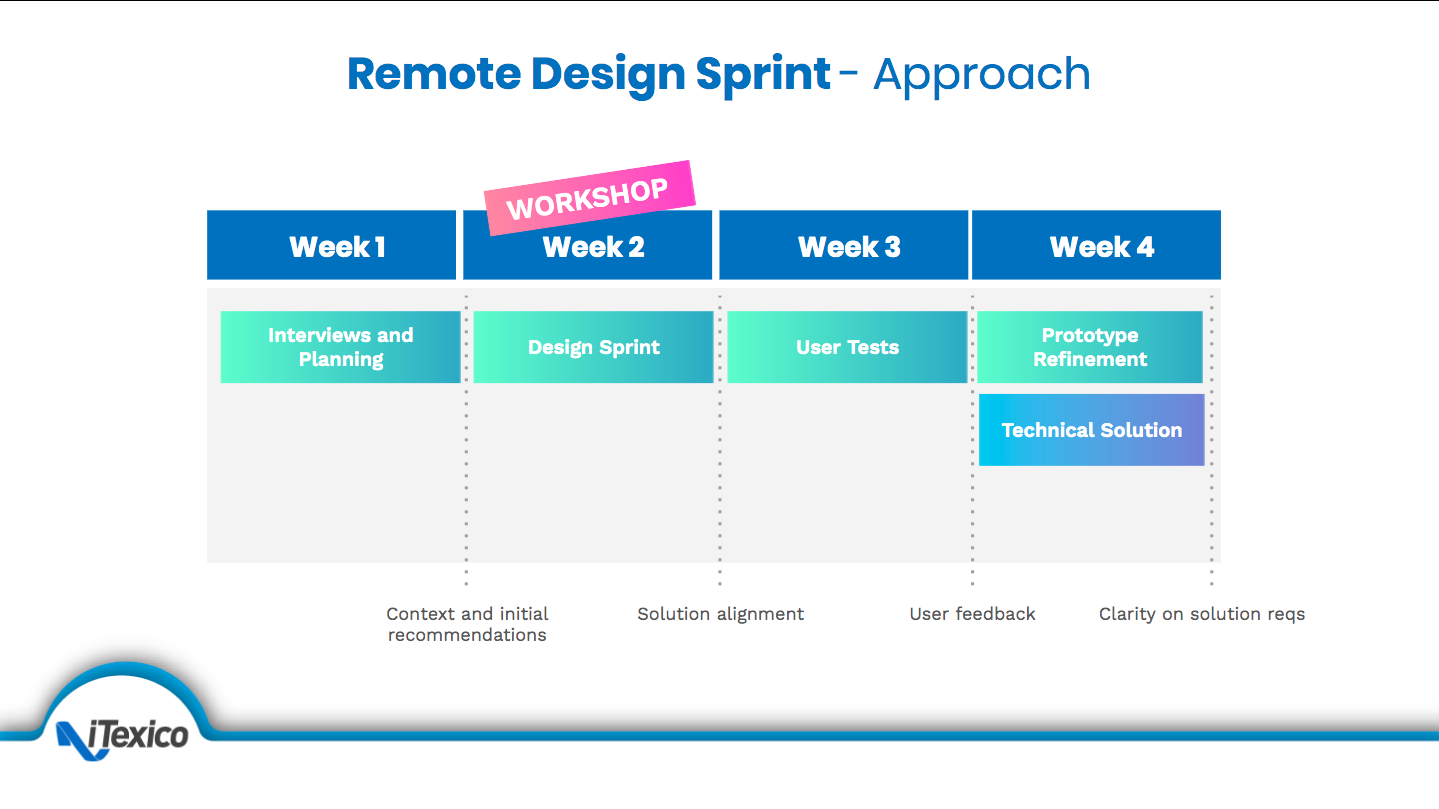
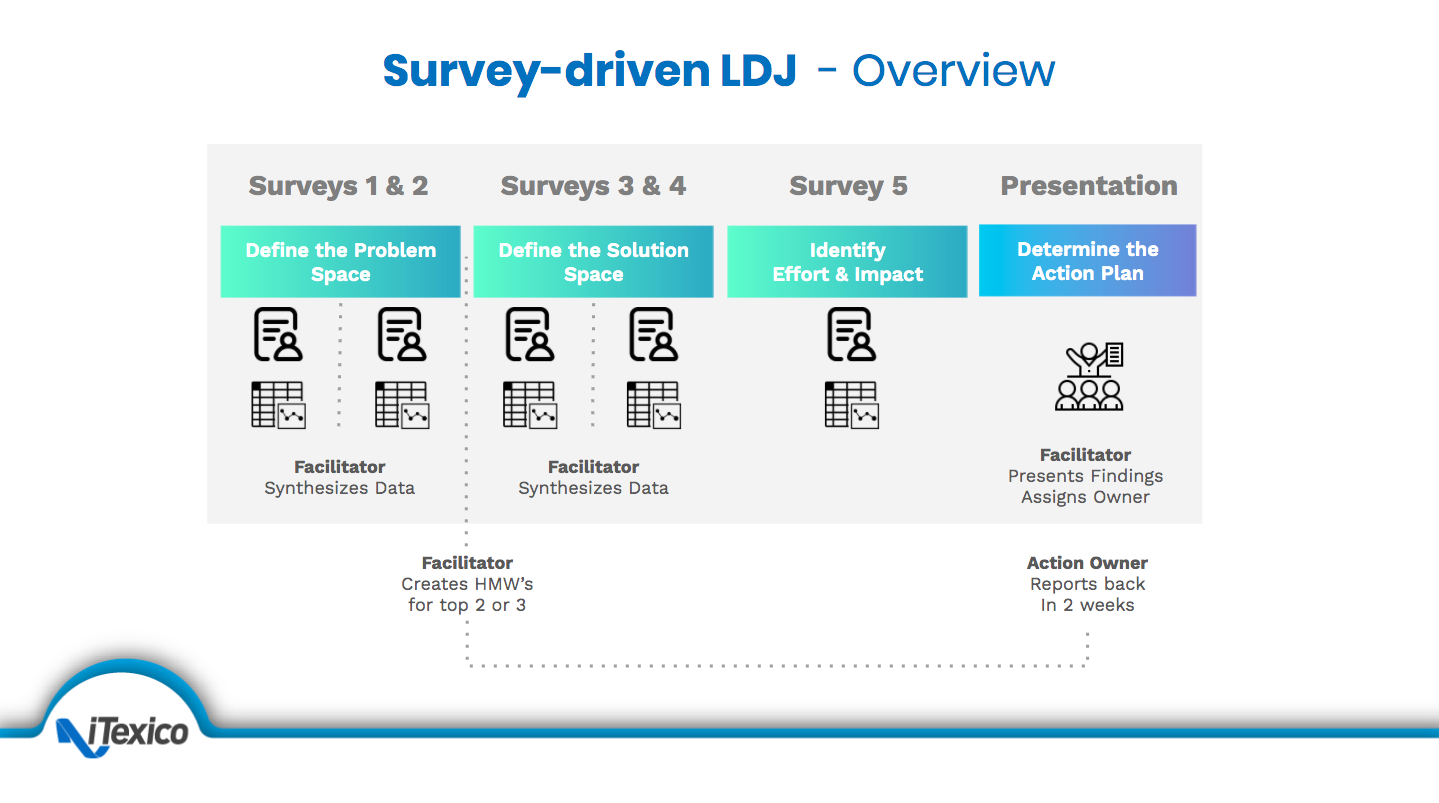
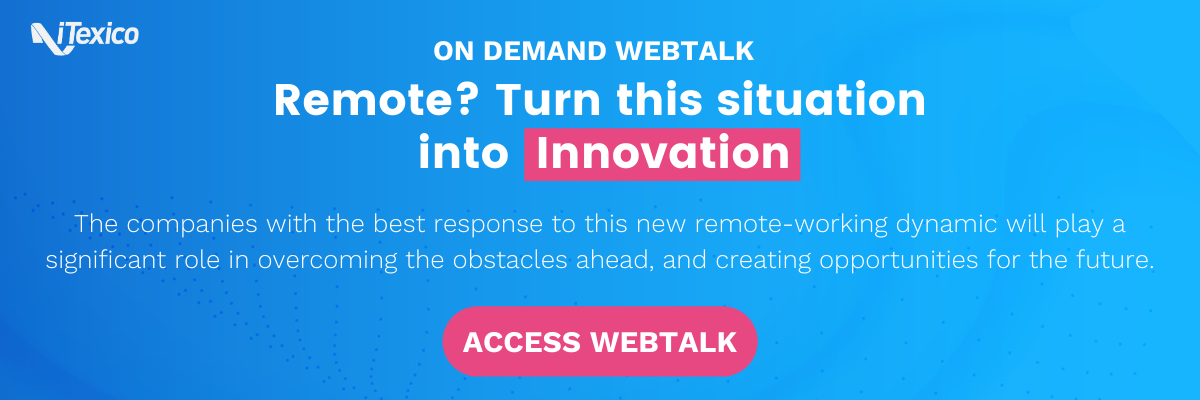


Post Your Comment Here